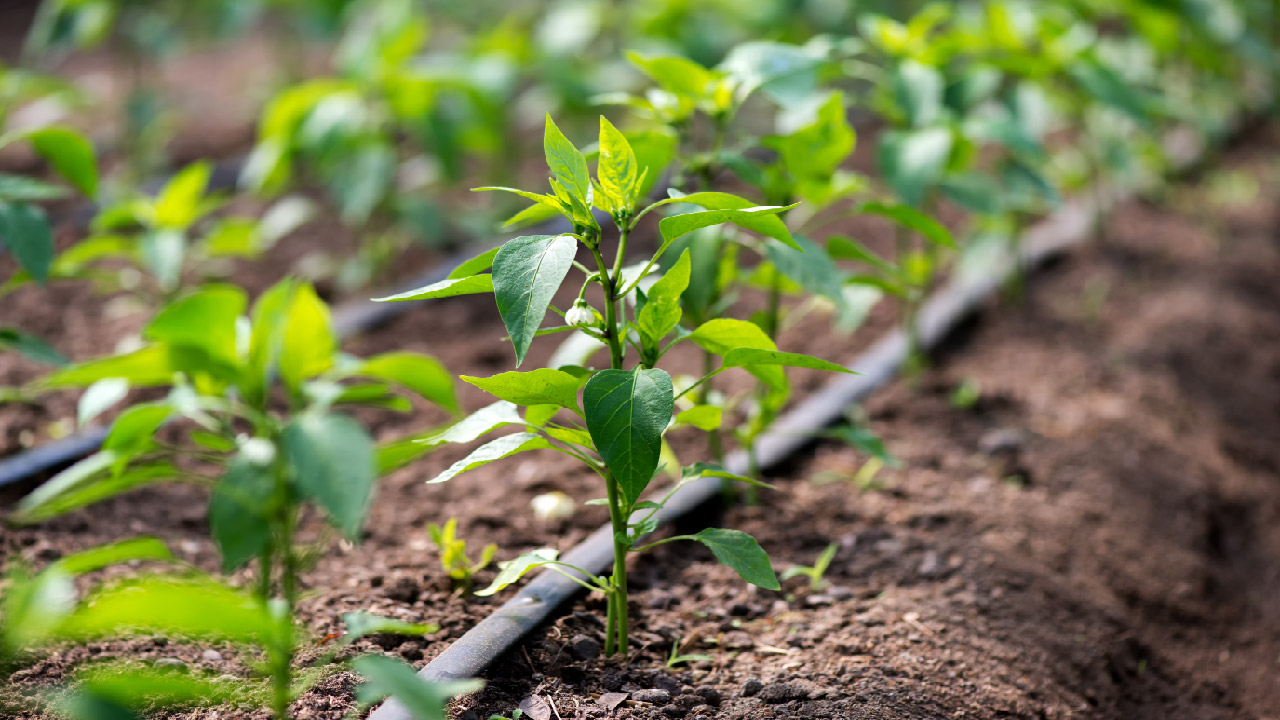Drip Irrigation: How to Prevent Clogging in Drip Irrigation Systems
Mar 6th 2025
Drip irrigation is the most efficient and economical way to water plants, including vegetables, fruits, and flowers. It offers a range of benefits to gardeners, landscapers, and farmers, such as water conservation, better plant health, no soil erosion, and increased yields. Despite these benefits, this micro irrigation system has a significant challenge, which is clogged emitters or driplines.
Clogging is a serious issue in drip irrigation systems that typically occurs when debris, dirt, or minerals are present in the water block drip lines and emitters. It can lead to uneven water distribution, water wastage, and decreased plant health, making it crucial to address this issue.
In this drip irrigation guide, our experts share the significant causes of clogging in drip systems and effective ways to prevent clogging to ensure the optimal performance of your irrigation system.
Causes of Clogging in Drip Irrigation Systems
Clogging can occur due to the following reasons.
Sediment Buildup: This is the primary cause of drip irrigation system clogging. If the irrigation water quality is poor and the water filter is not installed, dirt, sand, and debris may be pumped into the pipeline and drip lines. When sediment passes through the emitter's opening, it reduces the hole's diameter, blocks the water flow channel, and causes the dripper to clog.
Algae Growth: The growth of green moss, algae, and other microorganisms can also clog the emitter's flow channel. Algae and other microbes can grow and multiply on the emitter's surface and block the water flow. This biofouling can cause nutrient deficiency in the soil, which may lead to poor plant health.
Chemical Reactions: The crystallization of chemical fertilizers in water can also lead to clogging. Acids, bases, and inorganic salts in the water can react with the emitter's material and cause corrosion or fouling.
Mineral deposits: If the irrigation water is hard and contains many minerals it can accumulate in the flow channel and clog the dripper. Minerals like calcium, magnesium, and iron can react with water components to form buildup on the emitter's surface, causing clogging.
In addition to these reasons, insects like ants and earwigs can also enter the emitter's opening and build nests, which can cause blockage.
Ways to Prevent Clogging in Drip Irrigation Systems
Preventing blockages should be a top priority for every drip irrigation system owner because prevention is the best way to avoid clogging the system. For the above causes of drip irrigation system clogging, here are the effective methods designed to prevent them.
Use Quality Water
The quality of the water used in drip irrigation systems significantly impacts emitter blockage and clogging. Filtering water can help remove suspended particles and debris, which prevents blockage. Adding a filter will help remove debris and contaminants from the water to prevent clogs and damage to your irrigation system.
Flush the System
Flushing the irrigation system on a regular basis can assist in removing debris, sediment, and algae that have accumulated in the drip lines and emitters. Flushing should occur at the beginning and end of each season and during months of low irrigation activity. The drip line or drip tape needs to be rinsed after five uses or three times every season. Open the control valve, remove the cap at the end of the drip tape/drip line, and run water at full volume until it becomes clear and the contaminants in the pipe are removed.
Install Irrigation Filters
Install water filters at the head of your drip irrigation system based on the quality of the water. Specialized filters, such as screen filters, sand filters, disc filters, and centrifugal filters, can eliminate debris, silt, and other impurities from irrigation water. If your water source contains a lot of sediment, these devices can help avoid blockage in drip emitters. Use the right type of filter depending on your system's requirements.
Read More: Irrigation Water Filters: Types and Uses
Use the Right Type of Emitter
Clogging can be significantly prevented by choosing the right type of emitter for the unique plants' needs, soil type, and water quality. Drip irrigation system manufacturers offer emitters that are designed to be clog-resistant and more suitable for high sediment conditions.
For example, DripWorks offers high-quality pressure-compensating drippers that deliver a precise amount of water even when pressure changes. Inside the emitter, a flexible diaphragm controls water flow and flushes particles from the irrigation system (self-flushing).
Regular Maintenance
Regular maintenance and cleaning of your irrigation system is crucial for preventing clogging and ensuring effective performance. Inspect the system periodically for cleaning, repairs, and replacements. Maintenance involves looking for leaks, cleaning the filters, checking the pressure regulators, and replacing broken or clogged emitters. For example, if flushing with acid, chlorine, or water does not remove the blockage in the system, you need to replace the emitter.
The Bottom Line
Clogging and blockage in drip irrigation systems are common problems that significantly impact crop production. They can lead to water wastage, poor plant health, damaged irrigation components, and lower yields. Clogging prevention methods range from selecting the right drip emitter and using specific water filters to performing regular maintenance and cleaning the system. Gardeners and farmers should follow the above measures to ensure the best performance of the drip irrigation system, extend the system life, lower maintenance costs, and increase crop yields.
DripWorks specializes in providing gardeners, landscapers, and farmers with the highest-quality drip irrigation components and ready-to-install drip irrigation kits. Explore our wide range of irrigation products from top brands to find the right one for your unique plants' needs.

